Silverline 891216 Handleiding
Silverline
Boormachine
891216
Bekijk gratis de handleiding van Silverline 891216 (3 pagina’s), behorend tot de categorie Boormachine. Deze gids werd als nuttig beoordeeld door 52 mensen en kreeg gemiddeld 4.4 sterren uit 26.5 reviews. Heb je een vraag over Silverline 891216 of wil je andere gebruikers van dit product iets vragen? Stel een vraag
Pagina 1/3

GB
FR
DE
Diamond Core Drill Bit Safety Instructions
silverlinetools.com
Recommended maximum rpm for core drill size
Diamond Core Drill Bit Recommended max rpm (min-1)
(mm dia) Concrete block Paving
slabs, Limestone Clay brick, Aerated block
6 1500 2000
8 1125 1500
10 925 1250
12 700 950
16 650 875
20 625 825
22 575 775
24 525 700
28 500 675
32 475 650
38 400 550
42 400 550
48 375 525
52 375 525
65 350 475
78 325 450
91 300 425
107 300 400
117 275 375
127 250 350
152 225 300
Vitesse recommandée en fonction du diamètre de la
scie trépan diamantée
Scie trépan diamantée Vitesse max recommandée rpm (min
-1 )
(mm dia) Bloc de béton
Pavet/dalle Calcaire
Brique d’argile
parpaing
6 1500 2000
8 1125 1500
10 925 1250
12 700 950
16 650 875
20 625 825
22 575 775
24 525 700
28 500 675
32 475 650
38 400 550
42 400 550
48 375 525
52 375 525
65 350 475
78 325 450
91 300 425
107 300 400
117 275 375
127 250 350
152 225 300
Verwendung
1. Vergewissern Sie sich, dass der Bohrbereich frei ist von elektrischen-, Wasser- oder Gasleitungen.
2. Fertigen Sie vor der Kernbohrung eine Vorbohrung für den Zentrierbohrer an.
3. Stellen Sie sicher, dass sich die Bohrmaschine im Rotationsmodus bendet, und
vergewissern Sie sich,dass ein etwaiger Bohrhammermodus AUSGESCHALTET ist.
4. Halten Sie die Bohrmaschine vor die zu durchbohrende Fläche und stellen Sie sicher,
dass die Bohrkrone in Bewegung ist, bevor die Schneiden die Bohroberäche
berühren, sowie wenn Sie die Bohrkrone aus dem Bohrschlitz hinaus ziehen.
5. Bohren Sie mit gleichmäßiger Geschwindigkeit bis zur benötigten Bohrtiefe.
Verwenden Sie stets die für den Bohrkronendurchmesser empfohlene Drehzahl
(siehe untenstehende Tabelle).
6. Entfernen Sie regelmäßig anfallenden Bohrstaub und Debris aus der Bohrung,
da diese die Abnutzung des Werkzeuges stark erhöhen und zum Abscheren der
diamantbeschichteten Schneiden führen kann.
7. Benutzen Sie niemals übermäßige Gewalt bis die Bohrkrone zu vibrieren beginnt; lassen Sie
die Bohrkrone die Arbeit verrichten. Dies wird die Lebensdauer des Werkzeuges erhöhen, einen
saubereren Schnitt erzeugen, und das Risiko des Verkantens reduzieren.
8. Nach der Benutzung wird die Bohrkrone sehr heiß sein. Seien Sie vorsichtig!
HINWEIS: Mini-Kernbohrer müssen im 45°-Winkel angesetzt werden. Halten Sie die Bohrmaschine
dabei gut fest und stellen Sie erst eine Rundum-Einkerbung her während Sie die Bohrkrone langsam
in den 90°-Winkel bringen und dann den Bohrvorgang wie gewohnt fortsetzen.
WARNUNG! Das Nichtbeachten dieser Anweisungen kann zu Verletzungen oder Beschädigungen
des Werkzeuges führen.
Sicherheit
Tragen Sie die erforderliche persönliche Schutzausrüstung, inklusiv einer geeigneten Schutzbrille,
Gehörschutz und Atemschutz.
Wichtige Hinweise:
• Benutzen Sie NIEMALS einen Bohrhammer in Verbindung mit einer Diamantbohrkrone, da
dies die Schneiden beschädigt, die Gefahr des Verkantens erhöht und die Garantie erlöschen lässt.
• Diese Bohrkronen sind für das trockene Bohren in mitte harten Materialien wie z.B. Ziegel und
Gasbeton ausgelegt.
• Prüfen Sie die Kapazität der Bohrmaschine, um sicher zu stellen, dass diese für die Verwendung mit
dem Bohrkr nen geeignet ist.
• Verwenden Sie Bohrkronen ausschließlich mit Bohrma chinen, die über eine Sicherheitskupplung
verfügen. Stellen Sie bei der Verwendung von SDS-Bohrmaschinen sicher, dass diese mit einer
Sicherheitskupplung ausgestattet sind und über eine ausreichende Kapazität
für die jeweilige Bohrkrone verfügen.
Zusammenbau
1. Schalten Sie die Bohrmaschine aus und trennen Sie das Gerät vom Stromnetz
bevor Sie einen Bohrer montieren oder demontieren.
2. Schrauben Sie die Spindel in die Bohrkrone ein und achten Sie dabei auf korrekten
Ansatz des Gewindes.
3. Setzen Sie das zugespitzte Ende des Zentrierbohrers in die Spindel ein, und
benutzen Sie einen weichen Hammer um ihn in die richtige Position zu bringen.
4. Fetten Sie den Spindelschaft und setzen Sie ihn mit der
Bohrkroneneinheit in das Futter der Bohrmaschine ein.
5. Benutzen Sie beim Kernbohren immer eine Bohrmaschine mit Zusatzhandgriff.
HINWEIS: Mini-Kernbohrer verfügen nicht über eine separate Aufnahme für Zentrierbohrer und
können ohne einen solchen verwendet werden.
Empfohlene maximale Bohrdrehzahlen für Diamantbohrkronen
Diamantbohrkronen-
Durchmesser Empfohlene Drehzahl (min
-1 )
(mm) Beton, Gehwegplatten,
Sandstein Tonziegel, Gasbeton
6 1500 2000
8 1125 1500
10 925 1250
12 700 950
16 650 875
20 625 825
22 575 775
24 525 700
28 500 675
32 475 650
38 400 550
42 400 550
48 375 525
52 375 525
65 350 475
78 325 450
91 300 425
107 300 400
117 275 375
127 250 350
152 225 300
Operation
1. Check that there are no electric cables or gas or water pipes in the area to be drilled
2. Drill a pilot hole rst to locate the pilot drill
3. Ensure the drill is in rotary mode and that hammer action is NOT engaged
4. Hold the drill squarely to the cutting surface. Ensure the core drill bit is moving
before it comes into contact with the surface, and when withdrawing from the hole
5. Drill at an even speed to the required depth. Drill at the recommended speed for
the size of bit and the material, as set out in the table below
6. Regularly clear any dust and debris from the hole; accumulated waste will
signicantly increase wear and may cause the diamond segments to jam or sheer
7. Never use force causing the core drill to vibrate; allow the drill to do the work – this will
prolong the life of the drill bit, produce a smoother cut and reduce the risk of jamming
8. After use, the core drill bit can be very hot; take care when removing
Note: Mini core drills require a 45° angle start. Hold the power drill rmly and create the initial mark
on the surface then gradually tilt the drill until a normal 90° angle is achieved and continue drilling
as required.
WARNING Failure to follow these instructions may result in injury to the operator, or damage
to the tool.
Safety
Wear approved eye protection, hearing protection and breathing protection when using this tool.
Important notes
• NEVER use hammer or impact action with diamond core drill bits; this will damage the
cutting edges, increase the risk of jamming and invalidate the warranty
• These core drill bits are intended for dry cutting in medium hard material, e.g. brickwork
and blockwork
• Check the capacity of the drill to ensure it is capable of cutting with the diamond core drill bit
• Core drill bits should only be used with drills that have safety clutches. Ensure SDS drills also
have a safety clutch and are of sufcient capacity for the bit
Assembly
1. Always switch off and disconnect the drill from the power supply before tting
or removing a core drill bit
2. Screw the arbor squarely into the core drill bit, taking care to ensure it is not cross-threaded
3. Place the tapered end of the pilot drill into the arbor and tap into place using a soft-faced
hammer or similar. Do not damage the drill tip by using a hard hammer
4. Lubricate the arbor shank (in accordance with drill manufacturer’s recommendations)
and secure the core assembly in the drill chuck
5. Ensure the drill has a side handle for complete control whilst core drilling
Note: Mini core drills do not require a separate arbor or use a pilot drill.
4. Lubrier l’arbre (en accordance avec les recommandations du fabricant) et sécurisez
la scie trépan sur le mandrin.
5. Assurez-vous que la perceuse soit munie d’une poignée latérale pour un meilleur
contrôle lors du perçage.
Remarque : les mini scies trépan n’ont pas besoin d’un arbre supplémentaire ou d’un foret de
guidage.
Effectuer un perçage
1. Vériez qu’il n’y a pas de câbles électriques ou de conduites de gaz et d’eau dans
la zone de perçage.
2. Faites un pré-trou pour s’assurer du positionnement du foret.
3. Assurez-vous que la perceuse soit sur le bon mode et le mode marteau ne soit pas sélectionné.
4. Maintenez le foret perpendiculaire à la surface. Assurez vous bien que la scie trépan soit en rotation
avent de rentrer en contact avec la surface, et quand elle ressort du trou de perçage.
5. Percer avec une vitesse constante jusqu’à la profondeur requise. La vitesse varie selon la taille
du foret et du matériau. Referez-vous à la table ci-dessous pour choisir a vitesse adéquate.
6. Dépoussiérez et nettoyez régulièrement des débris le trou de perçage pour éviter une usure
avancée et provoquer un blocage ou abimer les segments de diamants.
7. Ne pas forcer inutilement : laisser le foret faire son travail: cela prolongera la durée
de vie du foret, assure un meilleur perçage et réduit le risque de blocage.
8. Apres usage, la scie peut être extrêmement chaude : faites très attention en l’enlevant.
Remarque : Avec les mini scies trépan, un angle de 45° est requis au début du perçage. Tenez
fermement la perceuse, faites une marque, puis amenez au fur et à mesure l’angle à 90° pour percer
selon votre besoin.
ATTENTION : Ne pas respecter les instructions peut causer des blessures graves
et endommager votre outil.
Sécurité
Portez toujours les équipements de sécurités nécessaires l’utilisation comme des lunettes
de protection, protections auditives et respiratoire et des gants de sécurité.
Remarques importantes :
• Ne jamais utiliser un marteau ou tout autre outils à impact avec la scie trépan ; cela
endommage le tranchant des bords, augmente le risque de blocage et annule la garantie.
• La scie trépan est conçue pour être utilisée en coupe sèche pour des matériaux de moyenne
et forte densité (exemple : la brique et parpaing).
• Vériez la compatibilité avec la perceuse.
• Utilisez la scie trépan avec la perceuse en mode sécurité. Ne pas utiliser avec une perceuse SDS,
à moins qu’elle ne soit en mode sécurité et qu’elle soit compatible avec la scie trépan.
Assemblage
1. Toujours débrancher la perceuse de sa source d’alimentation avant d’assembler ou d’enlever la scie
trépan.
2. Vissez directement l’arbre dans la scie trépan, en faisant attention de ne pas fausser le letage.
3. Placez l’extrémité conique du foret de guidage sur l’arbre, et utilisez éventuellement un maillet
pour le mettre en place. N’endommagez pas la pointe du foret avec un marteau dur.
Version date: 19.11.2018

ES
IT
NL
PL
silverlinetools.com
4. Aplique lubricante al husillo (siguiendo las instrucciones del fabricante) y je la corona
en el mandril del taladro.
5. Asegúrese de que el taladro disponga de empuñadura lateral para obtener un mayor control
de la herramienta.
Nota: Las coronas perforadoras pequeñas no necesitan utilizar husillos ni broca piloto.
Funcionamiento
1. Compruebe que no existan cables ni tuberías de gas y agua ocultas en la supercie a perforar.
2. Realice un agujero guía para posicionar fácilmente la broca piloto.
3. Asegúrese de que el taladro esté en modo rotación y NO en modo martillo.
4. Sujete el taladro de forma recta. Asegúrese de que la corona esté rotando antes de tocar
la supercie a perforar.
5. Utilice una velocidad constante a la profundidad requerida. Perfore a la velocidad adecuada
dependiendo del tipo de material tal como se indica en la tabla inferior.
6. Limpie regularmente el polvo y los restos de residuos depositados en los agujeros.
El polvo y las impurezas pueden dañar la corona de diamante.
7. No fuerce nunca la corona perforadora, deje que el taladro trabaje por si sólo, alargará la vida
útil de su herramienta y obtendrá cortes más limpios y precisos.
8. Después de cada uso, la broca puede estar muy caliente, tenga cuidado al retirarla.
Nota: Las coronas perforadoras pequeñas requieren un ángulo de inclinación de 45 º en la primera
perforación. Sujete el taladro rmemente y comience a perforar en la supercie marcada, incline el
taladro progresivamente hasta conseguir un ángulo de 90º. Siga perforando hasta conseguir la
profundidad requerida.
ADVERTENCIA: El no respetar estas advertencias e instrucciones puede causar lesiones graves.
Seguridad
Lleve gafas de protección ocular, protección auditiva y mascarilla de protección cuando
utilice esta herramienta.
Notas importantes
• Nunca use la función de martillo percutor cuando utilice coronas perforadoras de diamante,
podría dañar los bordes de corte y atascarse además de invalidar la garantía.
• Esta corona perforadora está destinada únicamente para cortes en seco en materiales de dureza
media tales como ladrillo y bloques de hormigón.
• Compruebe que el taladro que esté utilizando sea compa ible para coronas perforadoras
de diamantes.
• Utilice coronas perforadoras solamente con taladros que dispongan embrague de seguridad. No
utilice taladros SDS a no ser que dispongan de embrague de seguridad o que tengan la
capacidad suciente para utilizar la corona perforadora.
Montaje
1. Asegúrese de que el taladro esté desenchufado antes de colocar o retirar la corona perforadora.
2. Enrosque el husillo dentro del agujero del taladro, compruebe que esté bien colocado.
3. Coloque el extremo cónico de la broca de centrado en el husillo y golpéelo con un martillo
blando o similar. No utilice martillos duros, podría dañar la broca.
Velocidad máxima de perforación recomendada
Corona perforadora
de diamante r/min recomendadas (min-1)
(Diámetro mm) Hormigón, Losas,
Piedra caliza
Ladrillo de arcilla,
Hormigón celular
6 1500 2000
8 1125 1500
10 925 1250
12 700 950
16 650 875
20 625 825
22 575 775
24 525 700
28 500 675
32 475 650
38 400 550
42 400 550
48 375 525
52 375 525
65 350 475
78 325 450
91 300 425
107 300 400
117 275 375
127 250 350
152 225 300
5. Assicurarsi che il trapano abbia una maniglia laterale per il controllo completo,
mentre eseguendo un taglio per forare.
Nota : Con una mini corona a forare non c’è bisogno di usare una fresa pilota o altra punta da trapano.
Operazione
1. Vericare che non ci siano cavi elettrici o tubi del gas o dell’acqua nella zona da forare.
2. Praticare prima un foro a pilota per individuare la fresa pilota.
3. Assicurarsi che il trapano è in modalità di rotazione e che l’azione martello NON sia inserito.
4. Tenere il trapano esattamente alla supercie di taglio. Assicurarsi che la punta carotatrice si muove
prima che entri in contatto con la supercie, e quando ritirarsi dal foro.
5. Perforare ad una velocità uniforme no alla profondità desiderata. Forare alla velocità raccomandata
per la dimensione della punta e del materiale, come indicato nella tabella sottostante.
6. Regolarmente eliminare ogni traccia di polvere e detrit dal foro, se lasciate accumulare
i riuti aumenterà in modo signicativo l’usura e può causare i segmenti diamantati
di bloccarsi o scostarsi.
7. Non usare mai la forza e lasciare che il trapano facci il lavoro - questo prolungherà la durata della
punta, eseguire un taglio uniforme e ridurre il rischio di inceppamento.
8. Dopo l’uso, la punta può essere molto caldo, fare a tenzione quando si rimuove.
Nota : Con una mini corona a forare, cominciare a forare con un angolo di 45°. Tenere il trapano
fermamente per marcare sulla supercie, e poco a poco, portare gradualmente il trapano ad un angolo
di 90 °, e continuare a forare no alla profondità richiesta.
AVVERTENZA La mancata osservanza di queste istruzioni può provocare lesioni o danni allo strumento.
Sicurezza
Indossare occhiali di protezione omologato, protezioni acustiche e protezione delle vie respiratorie
quando si usa questo strumento.
Note importanti
• Non utilizzare MAI martello o azione ad impatto con una punta diamantata, questo potrebbe
danneggiare i bordi taglienti, aumentare il rischio di inceppamenti e invalidare la garanzia.
• Queste punte di base sono destinati per il taglio a secco al centro di materiale duro, per esempio
muratura e blocchi di lavoro.
• Controllare la capacità del trapano per assicurarsi che sia in grado di tagliare con la punta per
carotaggio diamantato.
• Utilizzare punte solo con trapani con giunti di sicurezza. Non utilizzare trapani SDS a meno
dotato di frizione di sicurezza e di capacità sufciente per la punta.
Montaggio
1. Sempre spegnere e scollegare il trapano dalla rete di alimentazione prima di inserire o rimuovere
una corona a forare diamantata.
2. Avvitare il pergolato esattamente nella punta, avendo cura di assicurare che non è multi-lettato.
3. Posizionare l’estremità affusolata della fresa pilota nel pergolato e toccare in posizione con un
martello a faccia lieve o simile. Non danneggiare la punta usando un martello duro.
4. Lubricare il gambo della pergola (in accordo con le raccomandazioni
del costruttore trapano) e ssare il centro della punta nel mandrino.
Max velocità di perforazione
Punta per Carotaggio Raccomandata rpm (min-1)
(mm dia) Blocco di cemento,Lastre
di pavimento, calcare
Argilla Mattone,
Blocco aerata
6 1500 2000
8 1125 1500
10 925 1250
12 700 950
16 650 875
20 625 825
22 575 775
24 525 700
28 500 675
32 475 650
38 400 550
42 400 550
48 375 525
52 375 525
65 350 475
78 325 450
91 300 425
107 300 400
117 275 375
127 250 350
152 225 300
Gebruik
1. Controleer de te boren plek op elektrische bedrading en waterleidingen.
2. Boor het centreer gat eerst voor de centreerboor.
3. Zorg ervoor dat de boormachine in rotatiestand is geschakeld.
4. Houdt de boor recht op het oppervlak. Zorg ervoor dat de diamantboor roteert voordat deze
in contact komt met het oppervlak en tijdens uittrekken vanuit het geboorde gat.
5. Boor op een gelijke snelheid tot de gewenste diepte is bereikt. Houd bij de boorsnelheid rekening
met de boor rootte en het te boren materiaal. Zie schema hieronder.
6. Verwijder stof en vuil regelmatig van de boor. Stof en vuil doen de boor sneller slijten en de
diamantsegmenten blokkeren.
7. Oefen geen overmatige druk op de boor uit waardoor de boor begint te trillen. Laat de boor het
werk doen zodat de levensduur behouden wordt. Tevens resulteert dit in een jne afwerking en
vermindert het de kans op blokkeringen.
8. De boor is na gebruik mogelijk erg heet. Ben voorzichtig bij het verwijderen van de boor.
Let op: Bij het gebruik van mini gatenzagen hoort in een hoek van 45° gestart te worden. Houdt de
boormachine goed vast en creëer de markering op het oppervlak. Kantel de boor geleidelijk aan naar
een 90° hoek en zet het boren in deze hoek voort.
WAARSCHUWING: Wanneer de instructies niet worden opgevolgd is de kans op beschadigingen
en persoonlijke verwondingen groot.
Veiligheid
Draag de juiste oog-, gehoor- en ademhaling beschermingsmiddelen bij het gebruik van de boor.
Belangrijke punten
• Gebruik de boormachine nooit in de hamer of impact stand; dit beschadigd de snijranden
wat het risico op vastslaan vergroot en de garantie ontkracht.
• Deze diamantboor is geschikt voor het droog boren in middel hard materiaal als metselwerk.
• Controleer de capaciteit van de boormachine om zeker te zijn van de boormogelijk
met de diamantboor.
• Gebruik de diamantboren allen op boormachines met een veiligheidskoppel. Gebruik geen
SDS-boormachines tenzij voorzien van een veiligheidskoppel of sufciënte capaciteit.
Montage
1. Schakel de boormachine uit en ontkoppel de stekker van de stroombron.
2. Schroef de boordoorn recht op de diamantboor.
3. Plaats het kegelvormige eind van de centreerboor op de doorn en tik deze in plaats met een
zachte hamer. Beschadig de boor punt niet door het gebruik van een harde hamer.
4. Smeer de boorschacht en vergrendel de samenstelling in de span kop.
5. Zorg ervoor dat de boormachine voorzien is van een zijhandvat voor een volledige controle
tijdens het boren.
Let op: Mini gatenzagen hebben geen aparte boordoorn en geen centreerboor nodig.
Aangeraden maximale snelheid voor de maat boor
Diamantboor Aangeraden snelheid (min-1)
(mm dia.) Betonblok, plavuis
Kalksteen Kleisteen gasbeton
6 1500 2000
8 1125 1500
10 925 1250
12 700 950
16 650 875
20 625 825
22 575 775
24 525 700
28 500 675
32 475 650
38 400 550
42 400 550
48 375 525
52 375 525
65 350 475
78 325 450
91 300 425
107 300 400
117 275 375
127 250 350
152 225 300
3. Umieścić stożkową końcówkę wiertła w uchwycie i delikatnie uderzyć za pomocą
miękkiego pobijaka bądź podobnego narzędzia. Tym samym należy uważać, aby nie uszkodzić
końcówki wiertła używając zwyczajnego młotka.
4. Nasmarować trzon uchwytu (zgodnie z zaleceniami producenta wierteł) i go zabezpieczyć
w uchwycie wiertarki
5. Po czym upewnić się, że wiertarka ma boczny uchwyt dla pełniejszej kontroli podczas
wiercenia rdzeniowego
Uwaga: Mini wiertła rdzeniowe nie wymagają specjalnego uchwytu bądź specjalnego wiertła
Obsługa
1. Najpierw należy się upewnić, że w miejscu wiercenia nie ma żadnych przewodów, kabli,
rur wodociągowych bądź gazowych
2. Następnie wywiercić drobny otwór pilotażowy
3. Po czym upewnić się, że wiertarka jest ustawiona na tryb obrotowy a udar jest wyłączony
4. Przytrzymać wiertarkę ostrożnie do obrabianej powierzchni. Upewniając się, że wiertło rdzeniowe
się obraca przed zetknięciem z powierzchnią i po wycofywaniu wiertła.
5. Kolejno wiercić w równej prędkości do wymaganej głębokości. Należy wiercić w prędkości
zalecanej w zależności od wielkości bitu i materiału, jak podano w tabeli poniżej.
6. Regularnie należy oczyszczać otwór rdzeniowy z pyłu i brudu; nagromadzone odpady spowodują
szybkie zużycie a diamentowe segmenty zablokują się bądź stępią.
7. Nigdy nie wolno używać siły, powodując tym samym wibrację wiertła rdzeniowego; należy pozwolić
wiertarce na swobodną pracę przedłuży to żywotność narzędzia i zagwarantuje gładsze cięcie oraz
zmniejszy ryzyko zakleszczenia
8. Po zakończeniu pracy wiertło rdzeniowe może być bardzo gorące, należy więc zachować szczególną
ostrożność podczas usuwania wiertła z wiertarki.
Uwaga: Mini wiertło rdzeniowe wymaga początkowego kąta 45°. Należy przytrzymać wiertarkę
mocno i zaznaczyć powierzchnię, po czym przechylić wiertło do osiągnięcia normalnego kąta 90° i
kontynuować wiercenie.
OSTRZEŻENIE: Nie zastosowanie się do poniższych instrukcji może doprowadzić do
obrażeń operatora bądź uszkodzenia narzędzia.
Instrukcje bezpieczeństwa
Należy nosić okulary ochronne, środki ochrony słuchu oraz środki ochrony dróg oddechowych
podczas korzystania z narzędzia.
Ważne uwagi
• NIGDY NIE WOLNO UŻYWAĆ diamentowych wierteł rdzeniowych z młotowiertarkami bądź
wiertarkami z udarem , gdyż spowoduje to uszkodzenie powierzchni tnących, zwiększa ryzyko
zakłóceń i utratę gwarancji;
• Diamentowe wiertło rdzeniowe jest przeznaczone do cięcia na sucho średnio twardego
materiału, np.: cegły i gipsu
• Należy się upewnić, że wiertarka jest przeznaczona do cięcia za pomocą diamentowego
wiertła rdzeniowego
• Diamentowe wiertło rdzeniowe powinno być użytkowane tylko z wiertarką posiadającą sprzęgło
bezpieczeństwa. Należy się również upewnić, że wiertarki SDS mają sprzęgło bezpieczeństwa oraz
wystarczającą zdolność bitu
Montaż
1. Zawsze należy wyłączyć wiertarkę od zasilania sieciowego przed wymianą i montażem
diamentowych wierteł rdzeniowych
2. Następnie przykręcić uchwyt przeznaczony do wierteł rdzeniowych, upewniając się przy tym,
że gwint nie został przekręcony
Zalecane maksymalne obroty (obr./min) do wielkości wiertła rdzeniowego
Diamentowe wiertło
rdzeniowe Zalecane maksymalne obr./min (min-1)
(mm średnica) Betonowe, Płyty
chodnikowe, Wapień Cegła, Pustaki
6 1500 2000
8 1125 1500
10 925 1250
12 700 950
16 650 875
20 625 825
22 575 775
24 525 700
28 500 675
32 475 650
38 400 550
42 400 550
48 375 525
52 375 525
65 350 475
78 325 450
91 300 425
107 300 400
117 275 375
127 250 350
152 225 300
Product specificaties
| Merk: | Silverline |
| Categorie: | Boormachine |
| Model: | 891216 |
Heb je hulp nodig?
Als je hulp nodig hebt met Silverline 891216 stel dan hieronder een vraag en andere gebruikers zullen je antwoorden
Handleiding Boormachine Silverline

5 Juni 2023

23 Mei 2023

22 Mei 2023

10 Mei 2023

10 Mei 2023

7 Mei 2023

1 Mei 2023

29 April 2023

28 April 2023

26 April 2023
Handleiding Boormachine
- Stalco
- Metabo
- Ozito
- Sthor
- Max
- Einhell
- Meister Craft
- Black And Decker
- Defort
- Smart365
- Max Bahr
- Texas
- Scheppach
- Ferm
- Go On
Nieuwste handleidingen voor Boormachine
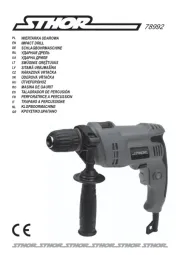
13 September 2025
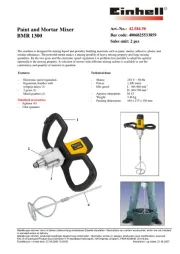
13 September 2025
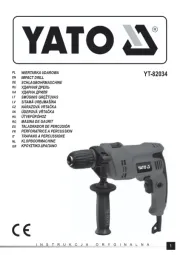
12 September 2025
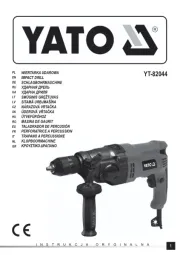
12 September 2025
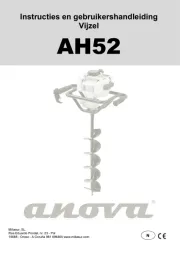
9 September 2025
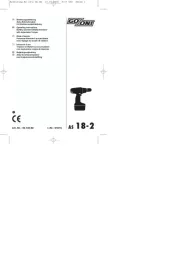
8 September 2025
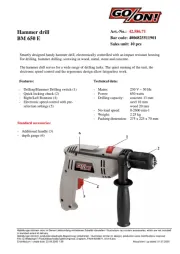
7 September 2025
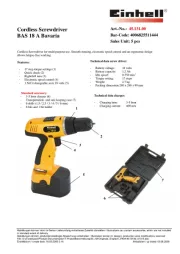
2 September 2025
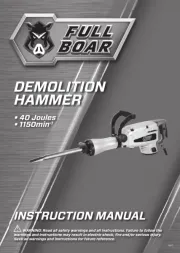
2 September 2025
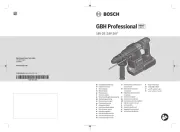
2 September 2025